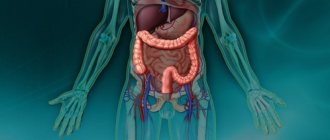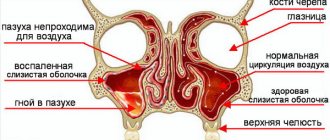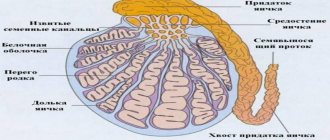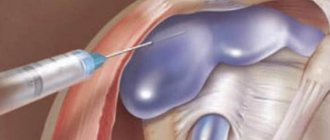The causative agent of this pathology
The causative agent of cerebral toxoplasmosis is the single-celled parasitic organism toxoplasma gondii.
The structure of such microorganisms is very primitive, but they adapt perfectly to a variety of living conditions. Toxoplasma gondii is capable of parasitizing the body of many species of mammals and birds. Other species are transitional hosts.
https://www.youtube.com/watch?v=0yC5QhMKekc
The appearance of the parasite can be seen under a microscope - it resembles an orange slice. The development of the microorganism takes place in 2 stages. At the first stage, sexual reproduction occurs, which can take place in the body of cats (domestic, wild). They are the primary hosts of the parasite.
The second stage - asexual - takes place in the body of an animal or bird, where the microorganism is introduced into the cell structure. The parasite divides until the cell ruptures. As a result, the toxoplasma gondii population comes out.
Parasites formed in this way are called tachyzoites. They have the ability to further reproduce by fission, but the human immune system of a person in normal health easily recognizes and destroys them.
Diagnosis of the disease
It is possible to determine whether there is anti Toxoplasma gondii in the body by examining venous blood.
This serological method is based on the fact that the presence of antibodies to infection is determined in the serum. For a comprehensive diagnosis, it is better to check all immunoglobulins for the specified disease. For example, the absence of Toxoplasma gondii IgG does not mean that a person is absolutely healthy. These antibodies are not produced immediately. In this case, it is important to determine whether the IgM titer is elevated. If this figure is too high, then the infection occurred just a few weeks ago. No more than 3 months have passed since the first contact with the infection. But if it is within normal limits, in combination with normal IgG levels, then the person, most likely, has never had toxoplasmosis. Infection within the last 12 months may be indicated by the fact that class G antibodies to Toxoplasma are present in the blood serum in combination with IgM titers. But sometimes even this information is not enough. It is important for doctors to determine how strongly antibodies can bind to antigens. The earlier the body encounters an infection, the higher this ability will be. Experts call these properties of binding to antigens avidity to Toxoplasma.
At the same time, it is difficult to say what exactly the level of antibodies should be, because different laboratories have established their own normal values. They are always displayed in research results. Only a doctor should evaluate the results of the analysis, who will not only know how much the data obtained differ from the norm, but also understand what IgG and IgM titers mean.
It is also important to be able to interpret Toxoplasma avidity during pregnancy. If it is high and is more than 40% by the end of the first trimester, then infection of the expectant mother during pregnancy can be excluded. But even low avidity does not mean that the infection occurred recently. In this case, it is recommended to retake the test in a couple of weeks to determine how the indicators have changed. Based on these dynamics, it will be possible to draw certain conclusions about the duration of infection.
Concept of brain disease
In the modern world, cerebral toxoplasmosis is considered a rare pathological phenomenon and develops more often in people with immunodeficiency who are unaware of their HIV infection and therefore are not treated. This disease is parasitic, that is, caused by the pathogen Toxoplasma gondii, which is considered pathogenic for mammals and birds.
Parasitic Toxoplasma is active against the central nervous system, but can affect other organs - muscle tissue, heart, liver tissue, pulmonary structure, intestines, which is diagnosed posthumously. The cerebral form of toxoplasmosis is considered a life-threatening pathology that is difficult to treat and leaves behind persistent neurological dysfunction.
Distinctive features of toxoplasmosis:
- variability of the clinical picture;
- possibility of asymptomatic course;
- contamination from pet feces;
- variety of forms and flow options.
History of the study
The causative agent of toxoplasmosis is Toxoplasma gondii.
was discovered for the first time in 1908 simultaneously by French researchers Nicoll et Manceaux in Tunisia in the North African rodent
Chenodactylus gondii
and Splendore in Brazil in rabbits.
The shape of the parasite (crescent, orange slice) is the basis of the generic name - toxon
in Greek - arch, arch, species
- gondii
is associated with the name of the host - a rodent.
Toxoplasmosis in humans. The first information about the possible pathogenic role of Toxoplasma for humans is associated with the work of A. Castellani (1913, 1914) in Ceylon and A. I. Fedorovich (1916) in Russia, who discovered parasites similar to Toxoplasma when examining smears of the spleen and blood for malaria.
A reliable description of toxoplasmosis in humans was made by the Czech ophthalmologist Janky (1923), who observed a case of severe pathology in a newborn who died with symptoms of hydrocephalus, left-sided microphthalmos, and bilateral macular coloboma. Microscopic examination of sections of the membranes of the eye revealed parasites similar to those previously described in animals.
In Ukraine, the study of different aspects of the problem of toxoplasmosis is associated with the names of A.K. Korovitsky, A.E. Grigorashenko, M.N. Melnik, A.G. Papa. A. S. Sokol, I. I. Grishchenko, N. I. Shpaka and others.
Causes of human infection
Brain toxoplasmosis cannot be transmitted between people, except when transmission occurs from a pregnant woman to her fetus and during an organ transplant. Infection can occur from representatives of the cat family and through consumption of raw or poorly cooked (done) meat.
Cats are the only animals in whose body the parasite is capable of forming spores - oocysts, the role of which is to infect intermediate hosts.
Toxoplasma spores can exist for a long time in environmental conditions, since they are covered with a fairly dense protective membrane. When any animal or bird swallows an oocyst, it becomes its intermediate host, and theoretically can become a victim and be eaten by a member of the cat family. In this case, the parasite gets the opportunity to switch to sexual reproduction - the cycle begins to repeat itself.
The source of infection can also be a domestic cat that never leaves the premises. This is due to the fact that people can bring the parasite on their shoes or feed the animal uncooked meat. In cats, toxoplasmosis occurs without external manifestations, so owners may not even notice that the animal is infected with the parasite.
Toxoplasmosis of the brain occurs as a result of infection with the protozoan Toxoplasma gondii, a simplified name - toxoplasma. These microorganisms have an arcuate shape, less often - round or oval. Toxoplasma is characterized by gliding type motility. In nature, harmful microorganisms can only multiply in the host’s body.
- Through contact with domestic animals, usually cats (during play, contact with cat excrement, accidental bites and scratches of the skin).
- After working with soil containing excrement of infected animals.
- During contact with raw meat contaminated with Toxoplasma.
- When eating animal products (meat, milk, eggs) that have undergone insufficient heat treatment.
Quite rarely, cases of infection are recorded from blood transfusions, as well as from the use of untreated medical instruments (syringes, needles). There are forms of congenital disease that occur as a result of the transmission of infection intrauterinely - from mother to child.
The group of main complications that occur as a result of toxoplasmosis includes severe changes in the functioning of the brain and organs of vision, which causes disturbances in nervous activity and blindness. With a secondary infection, purulent meningoencephalitis occurs. Severe brain damage can result in death.
There are a number of symptoms of the disease.
Folk remedies
Folk remedies can be used as an addition to drug treatment. But they cannot completely replace traditional methods of therapy.
Horseradish root helps well with toxoplasmosis - it should be crushed in a meat grinder and mixed with an equal amount of sour cream. Eat 10 g of medication three times a day for three days. Additionally, you should consume 50-60 g of raw pumpkin seeds per day - a small amount of them should be eaten in the morning before breakfast.
Herbal treatment effectively helps to cope with the infection. Aspen bark, elecampane roots, eucalyptus, and calendula inflorescences will help with toxoplasmosis. You need to brew 5 g of one of these ingredients in 250 ml of boiling water, strain after an hour. Take 15 ml 4-5 times a day.
Propolis tincture has a pronounced antibacterial property. It is necessary to pour 20 g of beekeeping product with 100 ml of alcohol, put the mixture in a dark place for 3 days. The medicine should be taken 40 drops daily, first diluted in a small amount of water.
Toxoplasmosis is a serious and dangerous disease: it is easy to get infected and almost impossible to completely get rid of. To prevent infection, it is necessary to regularly show your domestic cat to a veterinarian and clean the litter box in a timely manner. You should not eat meat with blood, raw shellfish, dirty vegetables and fruits.
Symptoms for this pathology
Toxoplasmosis of the brain, the symptoms of which have a wide range, can be acquired or congenital. The acquired form of this disease is characterized by an incubation period ranging from 3 days to two weeks. At the beginning, malaise, pain in joints and muscles are observed. Then the acute stage begins, which appears rapidly, an increase in temperature, lymphadenopathy, and chills are observed.
A specific rash appears throughout the body, which is absent on the feet, palms and scalp. This is accompanied by damage to internal organs: hepatitis, nephritis, myocarditis, pneumonia. The nervous system is affected, meningoencephalitis, meningitis, encephalitis, and encephalomyelitis develop.
Meningoencephalitis is the most typical form in which toxoplasmosis manifests itself. It gives both meningeal and general cerebral symptoms: tonic-clonic convulsions, paresis of the limbs, impaired coordination and eye movements. There may be abscesses in the brain, single or multiple.
Also typical signs of the disease are clouding of consciousness, memory problems, lethargy, and loss of spatial orientation. A blood test shows a shift to the left in the blood count, leukocytosis, and an increase in ESR. The disease can manifest itself in acute and chronic form, as well as latent.
The acute form begins suddenly, is accompanied by fever, and there are signs of intoxication of the body. Acute toxoplasmosis, depending on which syndrome is predominant, can be typhoid-like, encephalitic, or mixed. After the symptoms of the acute disease have subsided, toxoplasmosis becomes chronic or latent.
bloating, aching pain, nausea, constipation. Myositis and myocarditis are important symptoms: calcifications can often be felt in the muscles. Sometimes signs of vegetative-vascular dystonia, endocrine disorders, and damage to the visual organs may appear. ESR remains within normal limits, but there is a tendency towards eosinophilia, and the level of leukocytes is increased.
The latent form of the disease is predominant. Its diagnosis is difficult and is usually determined by serological testing. The magnetic resonance imaging method copes well with the diagnostic task. In conditions accompanied by reduced immunity and HIV infections, the latent form of the disease can become severe and even cause the death of the patient. Meningoencephalitis and brain abscesses are common in patients with the HIV or AIDS virus.
Congenital toxoplasmosis entails severe developmental disorders of the fetus. If a pregnant woman becomes infected with this infection in the first trimester, the fetus dies due to defects incompatible with life. The onset of the disease in the second trimester causes severe brain damage in the developing fetus. The child experiences the acute form in utero and upon birth he is diagnosed with meningoencephalitis or its consequences.
Characteristic of congenital toxoplasmosis is a triad of signs: calcifications in the brain tissue, chorioretinitis and hydrocephalus. The latter is characterized by an increase in the size of the head, thinning of the cranial bones and tension of the fontanelles. Congenital toxoplasmosis leads to mental retardation, mental retardation, psychotic states of various types: hallucinations, depression, catatonia. This condition is often accompanied by jaundice, enlarged spleen and liver.
The variability of the clinical picture determines the damage to a specific organ, the scale and form of the process. The congenital form in children is more severe than the acquired form in adults. There are known cases of asymptomatic progression. The acute form is characterized by:
- heat, chills with fever;
- muscle pain, aching joints;
- severe weakness;
- constant migraine;
- enlarged lymph nodes;
- dysfunction of the nervous system, expressed by incoordination, speech impairment, retardation.
Toxoplasmosis deprives the patient of his strength, gives him a fever, provokes irritability and blurred vision.
Chronic toxoplasmosis of the brain does not show itself for a long time, but during exacerbation it manifests itself:
- constant fatigue;
- irritability;
- causeless fever;
- increased incidence of migraines;
- decreased visual acuity;
- brain dysfunction.
Toxoplasmosis encephalitis may be accompanied by:
- myopia;
- erectile dysfunction (in men) and amenorrhea (in women);
- inflammation of the inner lining of the heart;
- flatulence and other intestinal disorders.
When infected with brain toxoplasmosis, the incubation period of the parasites takes 2 weeks. After this, the first signs of the disease begin to develop.
If a person has normal immunity, then clinical symptoms will not appear. An infected person may not even notice that he has had the disease. Subsequent blood testing may reveal the presence of antibodies to the parasitic organism.
Acute toxoplasmosis can develop in only 0.2% of patients. Statistics report that half of all cases of acute toxoplasmosis have a cerebral form. Cerebral toxoplasmosis can develop only in patients with disorders of the immune system.
In people without immune deficiency, cerebral toxoplasmosis of the brain develops only in exceptional cases. For example, in India, only 15 cases of infection with cerebral toxoplasmosis in people with normal immunity were described over 10 years. In each case described, the disease developed due to lack of normal nutrition.
Toxoplasmosis manifests itself with characteristic symptoms of encephalitis and meningoencephalitis. In addition, there are frequent cases of the appearance of space-occupying formations in the brain.
Symptoms indicating damage to the brain by toxoplasmosis are as follows:
- Impaired visual acuity associated with negative changes in retinal tissue.
- Partial or complete inability to perceive and interpret the speech of other people.
- Mental disorders.
- Epileptic seizures.
- Fever.
Brain toxoplasmosis manifests itself differently depending on the immune status of the new carrier and the route of infection. The acquired form is most often recorded. It is characterized by an incubation period of 3 to 14 days, during which Toxoplasma multiplies in the host’s body. During this period, symptoms of the disease may be absent or manifest in the form of general malaise, weakness, and muscle pain. After the end of the incubation period, the acute stage begins, which is characterized by the following symptoms:
- High temperature, fever, chills.
- Lymphadenopathy.
- Rash all over the body (except soles, palms, head).
- Brain damage with symptoms of meningoencephalitis.
With toxoplasmosis, the most characteristic sign of infection is damage to the brain and central nervous system, as a result of which various neurological disorders are observed:
- Convulsions (paresis) of the limbs.
- Impaired coordination of movements.
- Oculomotor disorders.
- Impaired consciousness and memory.
- Loss of the ability to navigate in space and other characteristic signs of brain damage.
The parasitic infection spreads throughout the brain and spinal cord, forming cystic foci of Toxoplasma accumulations. There are also signs of organ damage, which can manifest as a clinical picture of various diseases - nephritis, hepatitis, myocarditis, pneumonia.
The acute form of toxoplasmosis is characterized by a sudden onset of symptoms: fever, enlargement of the liver and spleen. With a sufficiently high protective function of the body, the disease can become chronic. The latter is characterized by such manifestations as intoxication, pain in muscles and joints. You can often find characteristic lumps (myositis) under the skin.
In the acute form of the disease, symptoms appear sharply.
Immunodeficiency conditions in humans, including HIV and AIDS, most often provoke the development of toxoplasmosis when infected. In this group of patients, the most common form of toxoplasmosis is the cerebral one; damage to the organs of vision, nervous system, and myocardium is typical. People infected with the immunodeficiency virus usually have more extensive symptoms, which cover not only the nervous system, but almost all vital organs and systems. Toxoplasmosis in HIV is often fatal.
Pregnancy studies
To exclude the possibility of intrauterine infection of the baby, it is necessary to examine expectant mothers. This is usually done at the end of the first trimester. This period was not chosen by chance, because infection is considered the most dangerous in the first three months. Even if the expectant mother becomes infected at a later date, it will no longer be so dangerous for the health of her baby.
But even if it was determined that a pregnant woman in the acute phase of toxoplasma, antibodies were found in the blood serum, this does not mean that she must have an abortion. Although in the first trimester, doctors, as a rule, insist on this procedure.
In addition to antibodies, avidity is determined. If all the results are disappointing, and everything indicates that the infection occurred after the baby was conceived, then it makes sense to examine the amniotic fluid.
This is the most reliable method of determining whether there is a risk of intrauterine damage to the baby. If the expectant mother tests positive for toxoplasmosis and an elevated level of IgM antibodies is determined, the doctor will recommend PCR diagnostics. To do this, a puncture is made in the abdomen and amniotic fluid is collected. It is examined to see if it contains DNA from Toxoplasma parasites. If the amniotic fluid is clear, then there is no point in talking about possible infection of the fetus: the baby is healthy, even if the mother was found to have antibodies to toxoplasma.
How does this disease begin?
The therapeutic regimen is selected by the doctor based on tests and examinations, which determine the form and stage of the process in case of damage to the brain and other organs. After diagnosing the disease, treatment begins as soon as possible. The acute form is treated with medication:
- chemotherapy drugs (Delagil, Fnsidar);
- tetracycline antibiotics;
- antihistamines;
- general strengthening agents;
- multivitamins, folic acid.
Cerebral toxoplasmosis begins suddenly. The patient experiences a sharp increase in temperature, confusion, an epileptic seizure, and deterioration of vision. In addition, paralysis of half the body or one limb may occur. Along with this, coordination of movements, speech, and swallowing are impaired.
Patients with symptoms of cerebral toxoplasmosis should be hospitalized in the neurological department of the hospital.
Prognosis for cerebral toxoplasmosis
The prognosis of the acquired form is characterized by a favorable outcome if the asymptomatic latent form predominates. Septic forms against the background of HIV infection and severe immunodeficiency occur in a severe form with large-scale damage to the brain and other internal organs, so the outcome is often fatal.
If the disease is detected at an early stage of development, therapy is successful in almost all cases. In advanced forms, toxoplasmosis is incurable, but constant therapy can stop its manifestations. Lack of treatment can lead to death. In addition, this can provoke the development of consequences of cerebral toxoplasmosis in the form of hemiparesis, ataxia, aphasia, and severe mental illness.
In this regard, it is important to consult a doctor when you detect the first signs of this disease, because the initial stages of the disease can be successfully treated. The main thing is to follow all recommendations.
Risks for patients with HIV infection with this disease
Brain toxoplasmosis ranks second in the ranking of opportunistic infections. Such infections include transmitted diseases that almost never develop in people with normal immunity. However, they are deadly for patients infected with AIDS and who have poor immunity.
In HIV-infected people, toxoplasma gondii can infect absolutely any tissue and organ, but, as a rule, its target is the brain. In 60% of patients with cerebral toxoplasmosis, the formation of space-occupying lesions in the central nervous system is observed, approximately 28% suffer from epileptic seizures.
On average, 20% of people infected with HIV are infected with cerebral toxoplasmosis. In those infected with AIDS, encephalitis of toxoplasmosis nature occurs in 12% of cases.
Toxoplasmosis of the central nervous system is manifested by the development of fever, headache, mental, and neurological pathologies. In patients with HIV, toxoplasmosis encephalitis is often accompanied by inflammatory processes in the choroids of the eye and the retina.
Alternative diagnostic methods
Quite rarely, in some forms of the disease, experts recommend, in addition to blood tests, other studies. They are needed for accurate diagnosis of a type of disease such as toxoplasma. Antibodies can be detected in any of its types.
The extent of infection in the body can be assessed using computed tomography or magnetic resonance imaging. These studies can identify foci of inflammation in the brain if there is a suspicion that the infection has affected this particular organ.
Quite rarely, a biopsy is used to make an accurate diagnosis. This is an analysis in which a section of diseased tissue is taken and examined in detail under a microscope.











